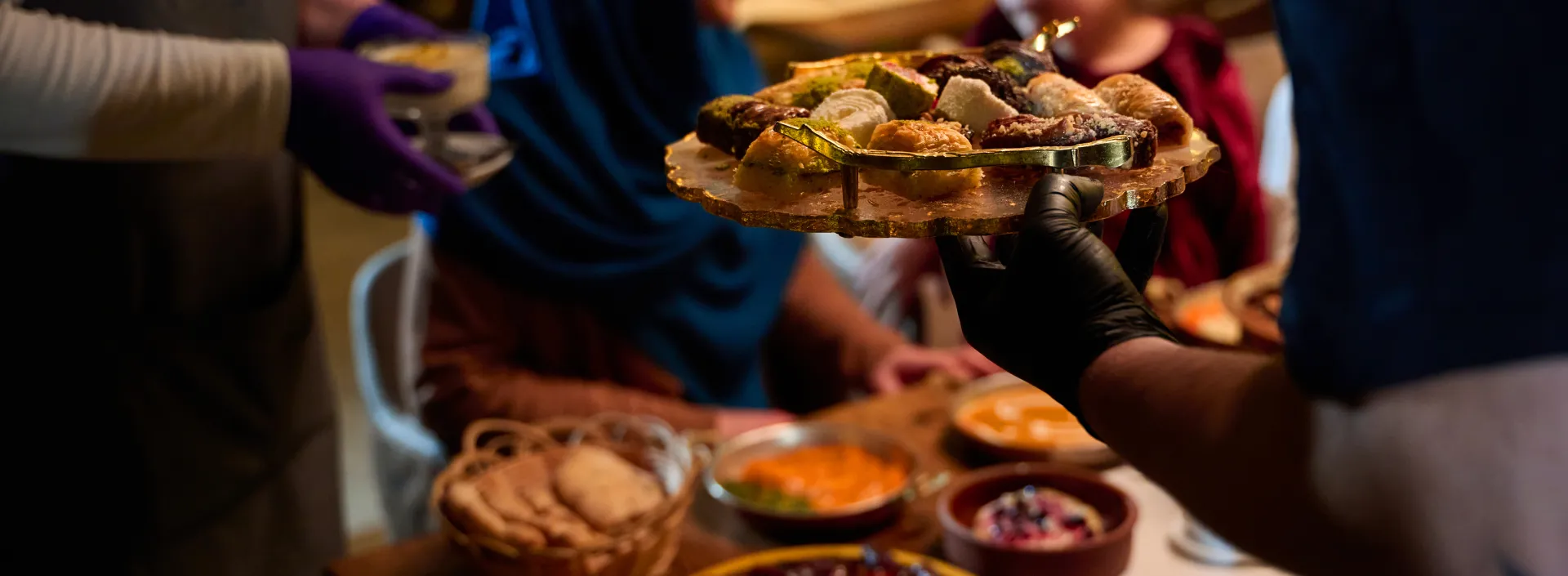A Great Restaurant Website Does More Than Look Good
When someone is deciding where to eat, your website is often the first impression they get of your restaurant. A beautiful design helps, but if your website doesn’t show up in search results, loads slowly, or makes it hard to book a table, potential customers will move on to the next option.
The best restaurant websites combine design, usability, and strategy to turn hungry browsers into real guests. Whether you own a small café, a local diner, or a high-end restaurant, a strong digital presence is one of the most powerful tools you have to keep seats full year-round.
Back to top
Step 1: Make Your Website Easy to Find
Search engines are how most customers discover new restaurants. That means SEO (Search Engine Optimization) is your secret weapon for visibility. The good news? Restaurant SEO doesn’t have to be complicated.
Learn more: SEO Basics For Small Business
Start by focusing on local SEO, the phrases people use when looking for a place to eat nearby. For example, “Italian restaurant in Quincy” or “best brunch near Fenway.” Use these naturally in your homepage content, menu descriptions, and blog posts.
Also, make sure your Google Business Profile is set up and fully optimized. Include your address, phone number, business hours, menu links, and plenty of high-quality photos. Encourage happy customers to leave reviews, since Google uses those to decide which restaurants to feature in local search results.
If you want to go one step further, list your restaurant on sites like Yelp, OpenTable, and TripAdvisor. These platforms all help increase discoverability and boost your SEO.
Back to top
Step 2: Keep Your Menu Front and Center
Don't make your customers hunt for your menu. Speaking from experience, this is a way more frustrating problem than you may realize. It’s one of the most visited pages on your site, and it should be easy to read, mobile-friendly, and always current.
Avoid PDF menus, which can be a pain for mobile users. Instead, create a clean, web-based version with clear text so search engines can read it (and so customers don’t have to pinch and zoom on their phones). Update it regularly with new items, seasonal specials, or events.
If your restaurant changes menus often, consider adding an “Updated on [date]” note. This reassures visitors that the information is fresh and accurate.
Back to top
Step 3: Make It Effortless to Book a Table
If you offer reservations, make that process as easy as possible. Ideally, your “Book a Table” button should be visible on every page, preferably in your site’s main navigation and at the top of your homepage.
Integrate your booking system directly into your site rather than sending users to a third-party platform. Tools like OpenTable, Resy, or Tock can embed directly into your website, keeping the process seamless and fast.
Even if you don’t take formal reservations, offer a clear way to contact the restaurant or join a waitlist. Convenience builds confidence and encourages more people to commit to dining with you.
Back to top
Step 4: Optimize for Mobile Visitors
Mobile usage dominates in consumer-facing industries, especially restaurants, retail, and travel, where people make quick, location-based decisions. According to Statstia.com, more than 60% of all website traffic is on mobile devices. If your website doesn’t load quickly or doesn’t display properly on mobile, you’re losing potential customers before they even see your menu.
Use responsive design so your site adapts to different screen sizes. Make sure buttons are easy to tap, phone numbers are clickable, and directions link straight to Google Maps. A few small tweaks can make a big difference in your conversion rate.
You can check your site’s mobile performance for free using Google’s Mobile-Friendly Test tool.

Back to top
Step 5: Pictures Pictures Pictures!
Your website is telling a visual story about your restaurant, and high-quality photos are must.
Consider investing in a professional photographer, even for just a single session to capture both styled and candid shots. We're not just talking the delectable dishes, plated to perfection. Think about all the things your customers love about their experience and feature those as much as possible. We're talking the decor, the ambiance, the storefront, and even the staff. Feature candid moments of your space filled with happy diners. Authentic images help build trust and give potential guests a taste of your brand’s personality.
And be sure to highlight unique features that make your restaurant special such as live entertainment, outdoor dining, city views.
And when your uploading the photos to your website, be sure to include descriptions and alt-tags to both improve accessibility and SEO.
Back to top
Step 6: Use Content to Stay Connected
Beyond menus and hours, your website can serve as a marketing hub. Add a simple blog or news section where you can post updates, announce seasonal specials, or highlight community events.
If you’re active on social media, feature your latest posts on your homepage or add social icons in your header and footer. Encouraging people to follow you on other platforms keeps the connection going long after they’ve closed their browser.
Consider adding a simple newsletter signup form to collect customer emails. Email marketing remains one of the most effective ways to drive repeat visits, especially when you promote new dishes, exclusive events, or loyalty programs.
Back to top
Step 7: Monitor and Improve
Your website should never be set it and forget it. Regularly review how it’s performing by looking at analytics. Ask questions like:
Which pages do visitors spend the most time on?
How many people book a table online?
What pages do they leave from?
Small data-driven changes, like simplifying your navigation or updating a slow-loading page, can have a big impact over time.
Back to top
Final Thought: A Great Restaurant Website Works as Hard as You Do
A well-designed, search-optimized website doesn’t just look professional, it drives business. By making your restaurant easy to find, easy to book, and easy to love, you’ll build stronger connections with local customers and keep tables full all year long.
If your current site feels outdated or isn’t delivering the results you want, now’s the perfect time for a refresh. A few smart updates today could help you attract more customers tomorrow.
Back to top




